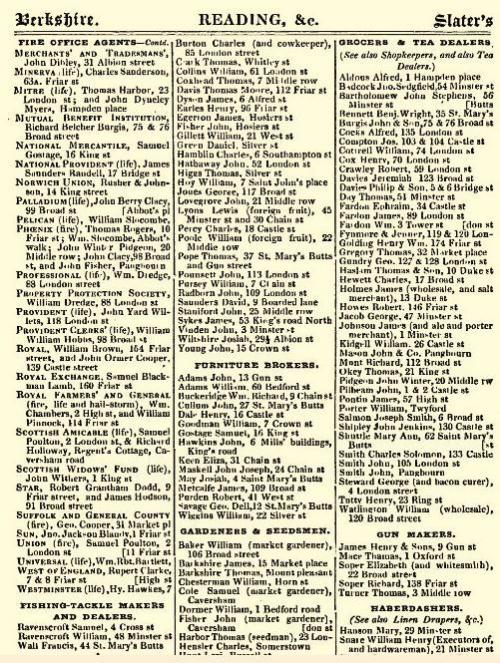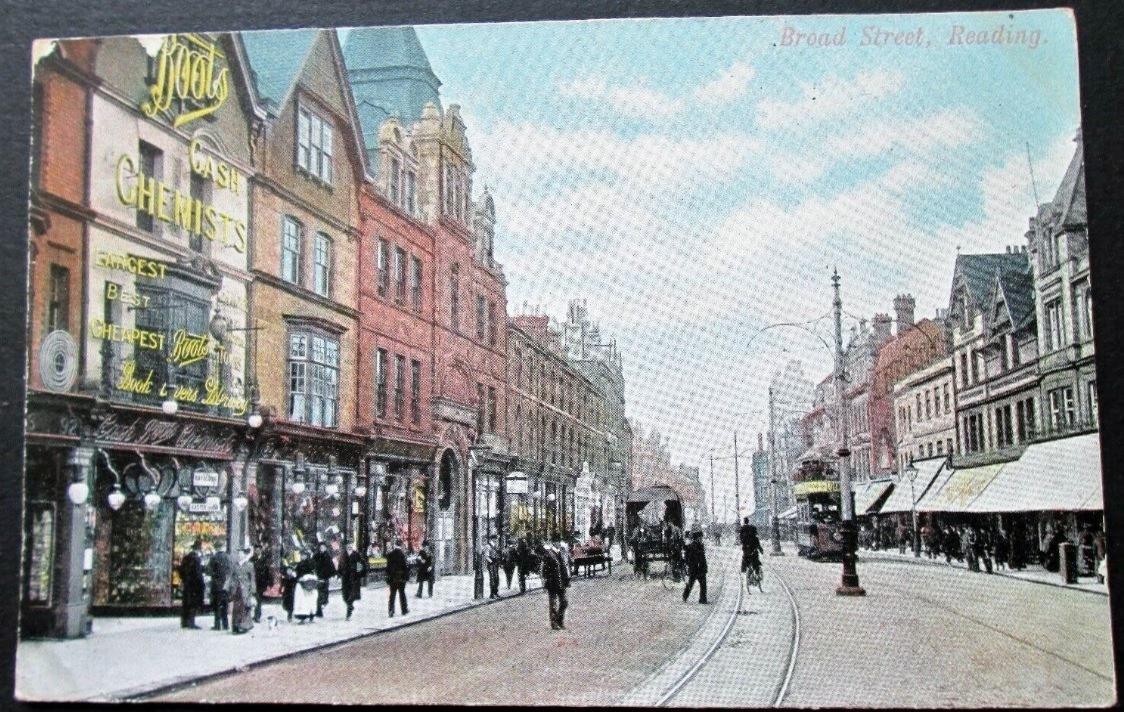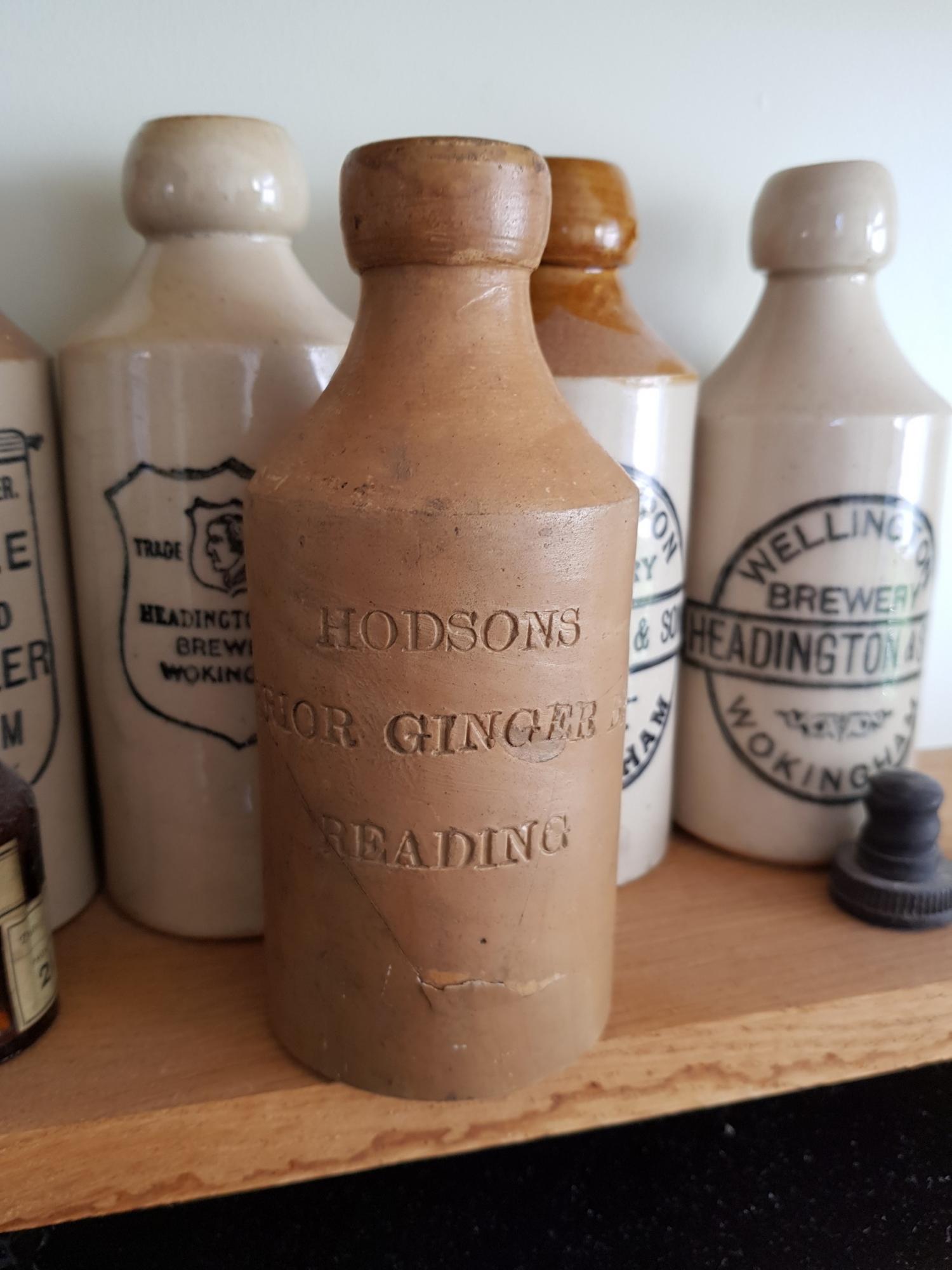EARLY BERKSHIRE GINGER BEER BOTTLES
Hodson's Superior Ginger Beer - Reading
One of the oldest known ginger beer bottles of Berkshire is a Hodson's Ginger Beer bottle from Reading. This is probably one of the most interesting and possibly important ginger beer bottles of Berkshire.
James Hodson was born in Ludlow on 28th April, 1795. He qualified as a chemist in London under a well regarded analytical chemist called Mr Hume and worked there practising for 5 years at 108 Longacre until 1825. He moved briefly to Hungerford but by the end of 1826 was living and practising as a chemist and druggist in Reading. Here is his picture.

He was a deeply religious man and was married to Mary Gower. He also had 3 children. In 1841 he owned a chemist and druggist called Hodson's at 91 Broad Street, Reading although presumably he was there also since 1826.
On 1st November 1841 he was one of the founding full members of the Pharmaceutical Society of Great Britain (Now known as the Royal Pharmaceutical Society) and appeared in Issue 1 of the journal as one of those full members as per the extract below.

In Kelly's Directory of Berkshire 1848 and Slater's Directory of Berkshire 1852 he was recorded as a chemist and druggist at 91 Broad Street, Reading and also a fire office agent for 'Star Fire and Life Insurance'.


In 1856 James Hodson sold his Broad Street chemist and druggist and emigrated with his family to Caversham, Lidgetton, Natal, South Africa where he had interests in and ran Caversham Mill. This seems ironical as Caversham is also part of Reading and can only presumably be a coincidence. He remained there until his death in 1865.
The next directory that I can find is Kelly's Directory of 1874 which records 91 Broad Street as a chemist and dentist occupied by Charles Sprent. This may have been who James Hodson sold the chemist business to. See below.

Unfortunately 90-93 Broad Street in Reading was demolished in 2002 and rebuilt and is now occupied mainly by Barclays Bank which you can see for yourself of course on Google Maps. However, a postcard dating from 1905 actually shows the building occupied by Boots Cash Chemists. 91 Broad Street appears to have been occupied as a working chemist for a very long time.

Fortunately, because Hodson is such an unusual name he was easy to track through the directories. In fact looking through the street directories covering that period (1826-1856) he was the only person in Reading at that time with that name. We can therefore be certain that the ginger beer bottle related directly to him and his chemist and druggist store and therefore must date during this 30 year period.

Regarding the bottle itself:
As far as I know the bottle is unique. I am not aware of another recorded example but would love to know if there is another out there.
The first thing that you notice about it is that it is smaller than later ginger beer bottles. It is easily the smallest 'full-sized' ginger beer that I have.
The next thing that you notice is the texture of the bottle. It is ultra smooth but the glaze is not shiny....it is quite matt (whatever glaze has been used is very different to any other ginger beer I have seen).
As a well educated man we might have expected HODSONS to have an apostrophe on the bottle as HODSON'S. It is probable that the typeset did not have the apostrophe in it when incising the lettering into the bottle though. Whether this means that the bottle is early or later during the 1826-1856 period is difficult to assess. Certainly apostrophes became more widely used as the 19th Century progressed and so could indicate that it was earlier rather than later.
I find it interesting that the words "SUPERIOR GINGER BEER" are incised in a bottle this early. It certainly suggests quite some competition for the ginger beer product.
One of the interesting things about this bottle is the way that the 'blob' top is formed. In particular is the absolute precision by which the cork would have fit into the bottle. Most cork closure ginger beers seem to have pretty much straight sided holes which would have made removal of the cork quite easy. This ginger beer bottle however would have fit the whole cork with precision and may have been difficult to remove. It is almost like it should have contained a ground glass stopper rather than a cork. Perhaps this is to be expected as he was a chemist after all!

Although ginger beer started to gain popularity in the 1830's it presumably would have either been:
i) drunk in public houses.
ii) distributed from other premises from large containers such as flagons, or
iii) distributed from containers/flagons on horse and carts.
In each of these cases it would be unlikely that a separate ginger beer bottle would have been used. It is likely that James Hodson had a bottle produced to differentiate his ginger beer contents from the standard ginger beer drinks out there and as such that is why he called his drink "SUPERIOR GINGER BEER". Also being a chemist, who knows what else he could have added into the drink to make it more likeable!!
So although this might start to explain why there are so few separate ginger beer bottles from 1830 to 1860 there are many other factors to consider also.
At that time these bottles would have mainly been made by local potters and it wasn't until the start of the second industrial revolution around 1870 that mass production of such bottles could take place by specialist manufacturers.
Also there was a period of recession during the late 1830's and early 1840's which could well have impacted the cost of purchase of such items and hence the real relative need for them.
It is also possible that any bottles from this period are very much still in the ground as they would almost certainly have been dumped on urban outskirts which then became covered as towns grew. Presumably some of these dumps are waiting to be discovered still!!
I find it ironical that James Hodson emigrated to South Africa shortly after the law was passed in 1855 to limit the alcohol content of ginger beer to 2%.
Was it chemists that influenced the design of the way that the bottle looked? Perhaps it was just that chemists had their name incised on the bottle before other ginger beer sellers and therefore fragments with no markings are not looked at or kept as interesting. My feeling is though, that with this particular bottle, James Hodson had some input into it's shape and form.